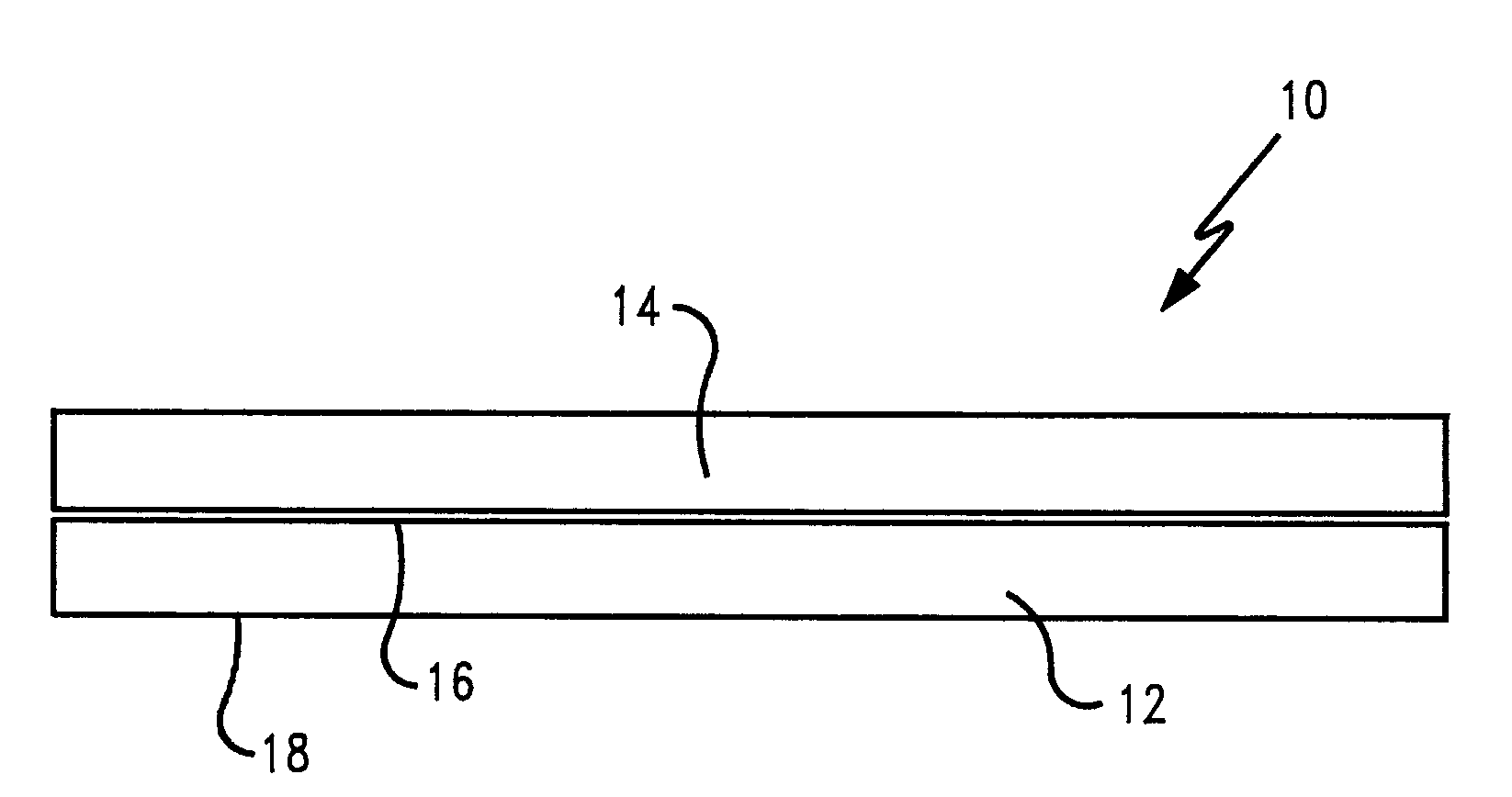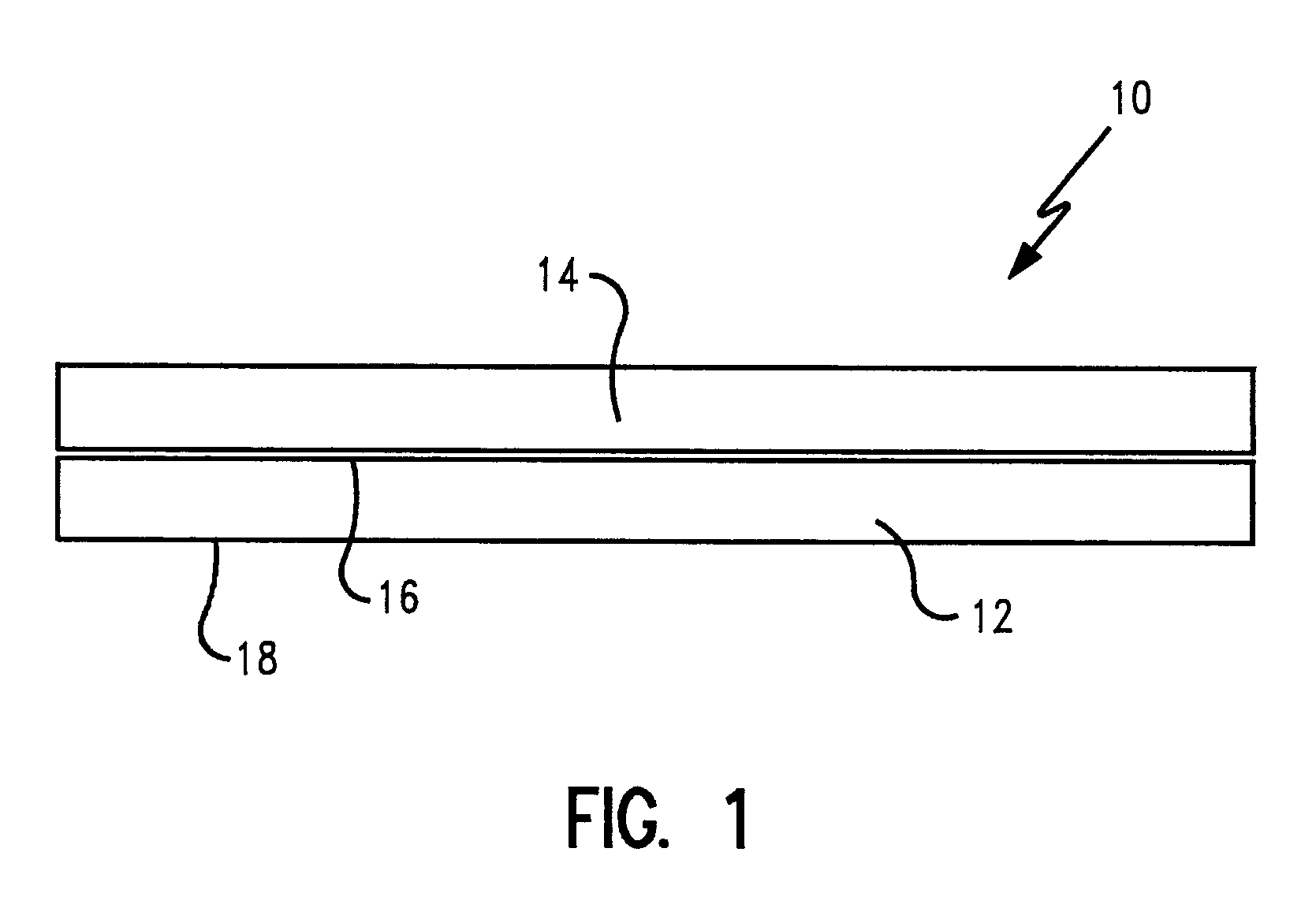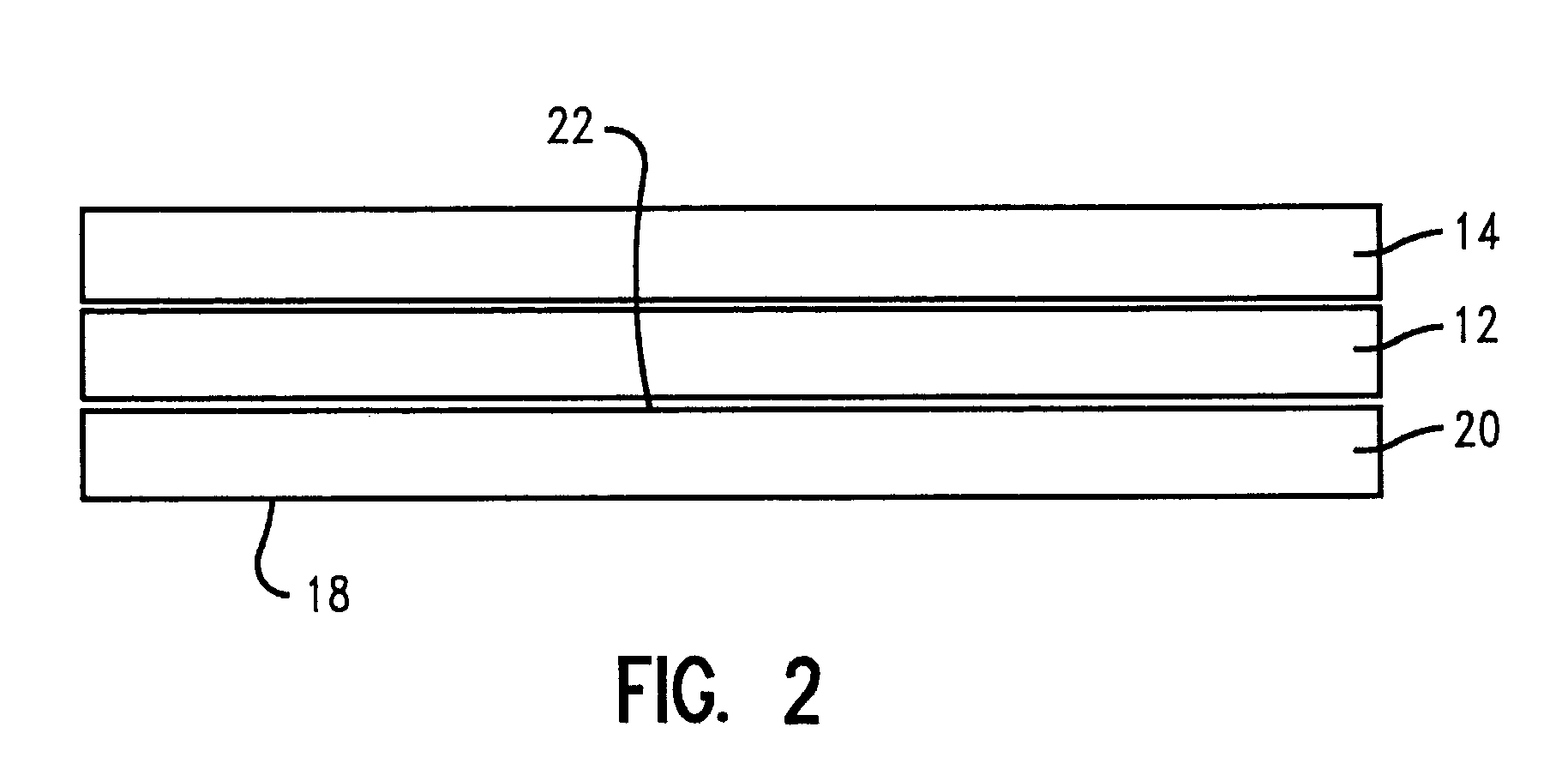Method for extrusion coating a lightweight web
a web and lightweight technology, applied in the field of web coatings, can solve the problems of excessive web breakage, relatively severe web conditions, and inability to stretch and deform the substrate, and achieve the effect of low base weigh
- Summary
- Abstract
- Description
- Claims
- Application Information
AI Technical Summary
Problems solved by technology
Method used
Image
Examples
example 1
[0054]A web of lightweight aluminum foil substrate having a basis weight of about 12.1 lbs / 3000 ft2 and a caliper of about 0.285 mils and a width of about 20 inches was unwound from a roll and conveyed to an extrusion station by a series of rollers and idlers. A heavyweight carrier web consisting of kraft paper having a basis weight of about 31.5 lbs / 3000 ft2 and a width of about 30 inches was also unwound and conveyed to the extrusion station. The foil web substrate was centered atop the carrier web and passed through a 36 inch wide pilot scale extrusion coating line.
[0055]In the extruder, a supply of low density polyethylene tradename, 850-P, available from Eastman Chemical Co. of Longview, Tex. was heated to a temperature of about 610° F. to provide a supply of molten extrudate. The molten extrudate was then fed through an extrusion die at a feed rate of about 215 lbs / hr to coat the webs as they passed through the extrusion station. The extrudate was cooled by contacting with a c...
example 2
[0057]Using the same 36 inch pilot scale extrusion line as in Example 1, a lightweight substrate web of HDPE film having a basis weight of about 13.5 lbs / 3000 ft2 and a caliper of about 0.9 mils and a width of about 28.75 inches was unwound from a roll and conveyed to an extrusion station by a series of rollers and idlers. A heavyweight carrier web consisting of kraft paper having a basis weight of about 31.5 lbs 13000 ft2 and a width of about 30 inches was also unwound and conveyed to the extrusion station. The HDPE film substrate was centered atop the carrier web and passed through the extrusion coating line.
[0058]In the extruder, a supply of low density polyethylene, tradename 850-P, available from Eastman Chemical Co. of Longview, Tex. was heated to a temperature of about 610° F. to provide a supply of molten extrudate. The molten extrudate was then fed through an extrusion die at a feed rate of about 215 lbs / hr to coat the webs as they passed through the extrusion station. The ...
PUM
| Property | Measurement | Unit |
|---|---|---|
| thickness | aaaaa | aaaaa |
| thickness | aaaaa | aaaaa |
| thickness | aaaaa | aaaaa |
Abstract
Description
Claims
Application Information
 Login to View More
Login to View More - R&D Engineer
- R&D Manager
- IP Professional
- Industry Leading Data Capabilities
- Powerful AI technology
- Patent DNA Extraction
Browse by: Latest US Patents, China's latest patents, Technical Efficacy Thesaurus, Application Domain, Technology Topic, Popular Technical Reports.
© 2024 PatSnap. All rights reserved.Legal|Privacy policy|Modern Slavery Act Transparency Statement|Sitemap|About US| Contact US: help@patsnap.com










